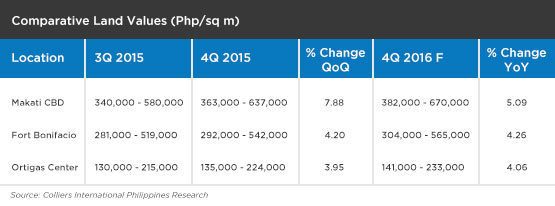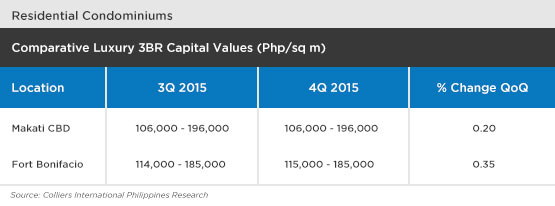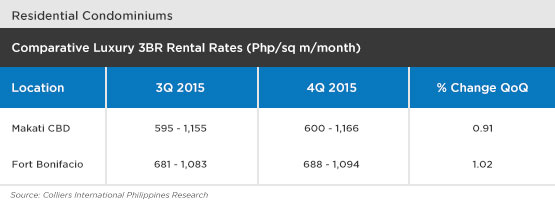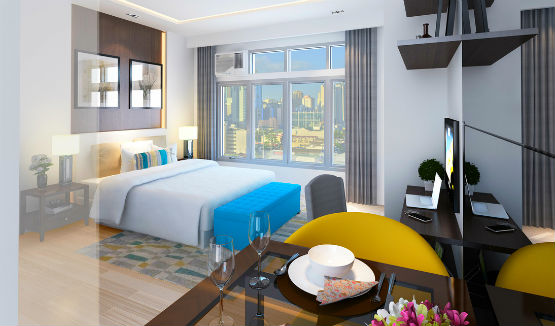When one needs to name the most progressive cities in the country, Makati usually comes on the top of the list. Establishing itself as the Financial Center of the Philippines, there’s no doubt that this dynamic city has enchanted both locals and foreigners alike.
Let’s look at some key statistics that makes Makati among the most progressive urban cities in the Philippines and the best place to live in.
2015 City Revenues: Php14 Billion
According to the Office of the City Treasurer, Makati earned nearly Php14 billion in total revenues in 2015. This figure is up by 9 percent from its 2014 figure.
Business tax collection in 2015 also increased by 10 percent from the previous year to almost Php7.3 billion. Real property tax collection amounted to Php4.8 billion, a 7 percent increase from 2014.
And while Makati has an internal revenue allotment of P869.3 million from the national government, it is one of the few local government units that are not dependent on this allocation. As a former resident and frequent visitor of Makati, these figures are evident in the country’s infrastructure development, public services, among other things.
Land Values in Makati CBD
Php 363,000 – Php 637,000 Per Square Meter Per Month, higher than the average in most cities in Metro Manila
It is the land on which your property is built that actually appreciates in value over time. As explained in this article, the value of the home is dependent on the land where it is built on because one cannot easily produce land to accommodate the demand.
As such, people investing in residential properties in Makati can be assured that the value of their assets consistently appreciates over time, with the average price being higher than in most cities in Metro Manila. Real estate services firm Colliers Jardine reports that the strong economy is boosting land values in Makati to unprecedented heights.

Average Residential Capital Value in Makati CBD: Php151,323 Per Square Meter Per Month
Moreover, premium residential units in Makati CBD commanded an average of Php151,323 per square meter while capital values in Fort Bonifacio were slightly lower at Php150,048 per square meter.

Average Residential Rental Rate in Makati CBD: Php883 Per Square Meter Per Month
The steady rise in capital values over time also reflects on properties that are for rent in Makati. Makati CBD residential unit rents averaged Php883 per square meter per month while rents at Fort Bonifacio residential units were slightly higher at Php891 per square meter per month.

Commercial and Retail Establishments: 60,000
According to the city’s Business Permits and Licensing Office, 4,211 new businesses registered in 2015 alone, bringing in over Php23 billion in paid-up capital. Existing business earned around Php1.1 trillion in estimated combined gross sales last year, proving Makati’s appeal as a business location, whether for conglomerates or start-up enterprises.
Corporations: 2,000
Aside from the country’s top 5,000 corporations, Forbes-listed companies have regional headquarters and operations within Makati CBD like Intel, Microsoft, Nestlé, Syngenta, Shell, Colgate-Palmolive, and Accenture.
Bank Head Offices: 472
In terms of financial activity, Makati CBD rivals key cities in the region such as Singapore and Hong Kong. Aside from local commercial banks, majority of foreign banks in the country have headquarters in Makati CBD – Citibank, Deutsche Bank, JP Morgan Chase, Bank of America, HSBC, and Standard Chartered, to name a few.
Shopping Centers: 48
More than just places to shop, Makati malls such as Glorietta Center and Greenbelt have become lifestyle hubs where people can soak in local culture and have fun.

In fact, some residential projects in the area such as Megaworld’s Three Central and San Antonio Residence also features their own lifestyle malls to help support that self-sustaining community within the city.
Embassies and Consulates: 87
To date, 47 embassies and 40 consulates are located in Makati, together with 20 international organizations such as the International Committee of the Red Cross and the United Nations International Children’s Emergency Fund (UNICEF). This makes the city beyond expat-friendly and internationally renowned.
Schools: 160
Educational institutions in Makati include Asia Pacific College, Assumption College San Lorenzo, Centro Escolar University, Don Bosco Technical Institute, Colegio de San Agustin, Asian Institute of Management, and Ateneo Graduate Schools.
Specialized schools such as Slim’s Fashion & Arts School, Philippine School for Interior Design, SoFA Design Institute, and more are also in the city.
Business Process Outsourcing Offices: 274
Investor incentives and IT-readiness in terms of Internet connectivity, telecoms infrastructure, and 24/7 technical support have made Makati’s 41 PEZA-listed buildings a sought-after base for hundreds of BPO companies, all of which are powered by a workforce that’s one of the most competitive in the region.
5-Star Hotels: 7
Makati Shangri-la, The Peninsula Manila, Raffles Hotel, Fairmont Hotel, and New World Hotel are among the city’s flagship hospitality brands.
Makati CBD also has a wide range of hotels and serviced apartments in different price points, catering to guests with more modest budgets.
Skyscrapers: 50
From commercial buildings to residential condominiums, Makati is home to many of the tallest structures in the country. Condominium living in Makati has paved the way for people to live closer to where they work, reducing travel time and transportation costs.
Hospitals: 14
Mention hospitals in Metro Manila and Makati Medical Center immediately comes to mind; it’s one of the country’s top healthcare facilities. The city government runs Ospital ng Makati, a public hospital. There are also 26 barangay health centers that offer free consultation and treatment to Makati residents on a daily basis.
Places of Worship: 10
Makati is known for places of worship with historical and architectural interest such as Sts. Peter and Paul Parish, Nuestra Senora De Gracia Parish, St. John Bosco Parish, St. Alphonsus Mary de Liguori Parish, Santuario de San Antonio, and the Greenbelt Chapel.
But while it has a predominantly Christian heritage, the city celebrates faith diversity.
Daytime Population: 4.7 million
Whether it’s to live, work, or play, Makati is the destination of choice of millions of local residents, tourists, and expatriates. Setting the bar high in terms of mobility, cultural diversity, business opportunities, and more, Makati makes living a cosmopolitan lifestyle an exciting reality.
Premiere Residential Communities: 9
As a place where business and leisure converge, Makati is a prime residential location, and there are no indications that developers are slowing down.

Megaworld, for instance, plans to expand its portfolio to 30 buildings by the end of 2016. One of its condominium projects is San Antonio Residence in San Antonio Village, an emerging art and culinary district that’s very accessible from Makati CBD. Its proximity to schools and offices make it a great home for young professionals on the go, determined millennials, newlyweds and starting families; as everything they need is within their reach.
Looking for a place near Makati CBD? Search for condominiums for sale here.











